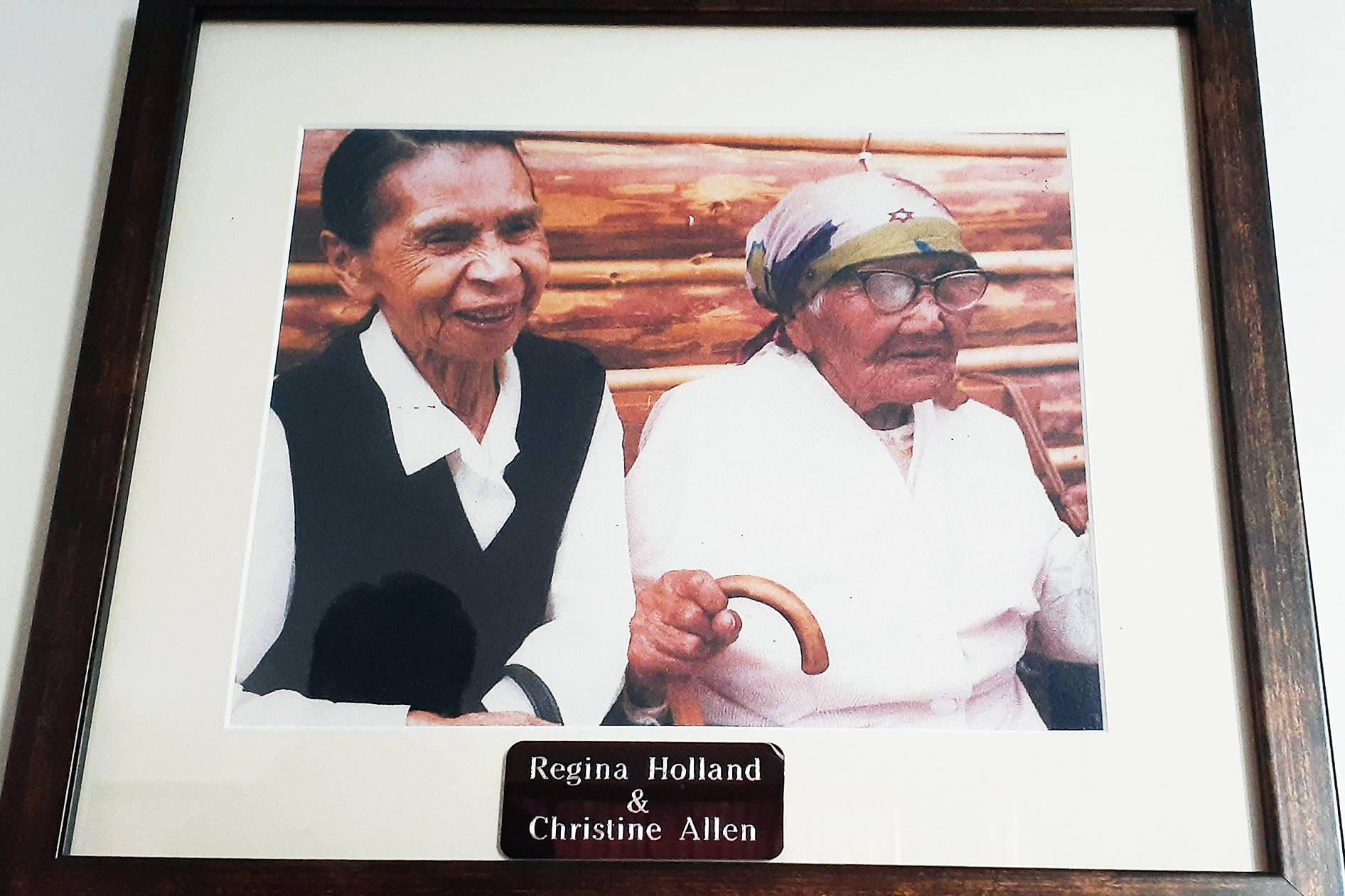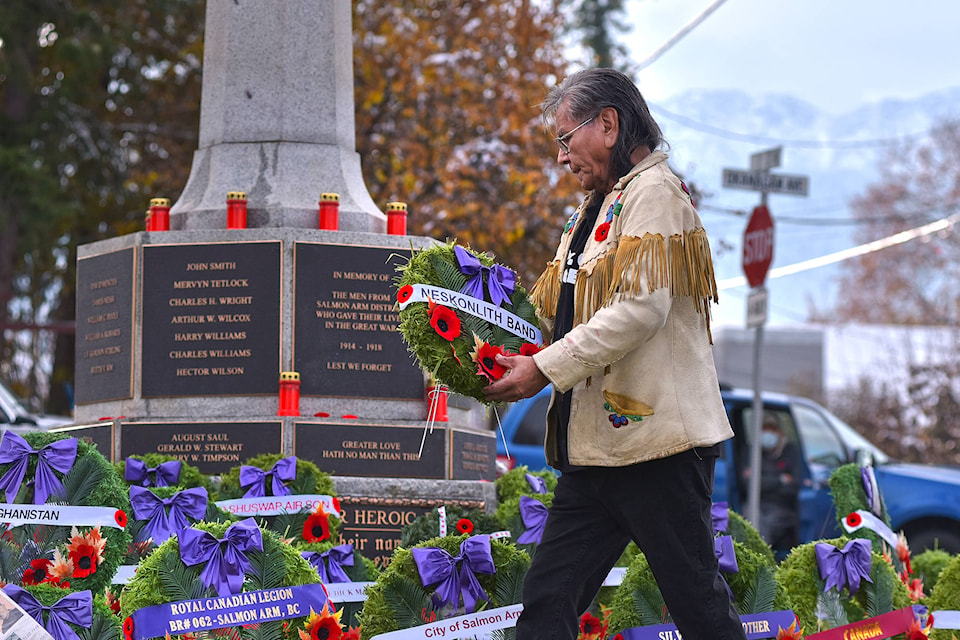When Louis Thomas lays a wreath at the cenotaph in Salmon Arm on Remembrance Day – like he did this year and many others – he thinks of his grandmother.
Thomas, a knowledge-keeper and councillor with the Neskonlith band, was raised by his grandparents. His grandmother, Christine Allen, took Nov. 11 seriously.
“She used to lay a wreath every Armistice Day, every Nov. 11. She always bought a wreath in honour of her family fighting. I think her picture was in quite a few papers, as one of the elders. She did it in remembrance of the ones that fought for the country,” Thomas said.
“Every time I go there, I think of her all the time – she left a little legacy there too. I thought it was my responsibility to carry on that tradition. After all, she raised me, she’d probably get mad at me if I don’t do it,” he laughs.
His grandmother lived to be 103. Louis’ mother, Mary Thomas, was a revered elder in the community and beyond. Louis said his grandmother was also a wealth of knowledge, and Mary called her, ‘her professor.’
Thomas recalls the history of his grand-uncle, William Perrish (also spelled Pierrish on the veterans’ list), who came back from fighting in the First World War.
He had lost an arm in the conflict but soon discovered he’d lost much more. Land.
He was the first to go for land title and rights, Thomas said.
“They used to have a summer cabin over at Palmer’s Creek. Because of the cool breeze and the fresh water there, they used to camp there every summer. Then one summer he went to camp over there and a farmer told him to get off his land, and he was wondering how come, as they had been going there for years. So he decided to pursue the title and rights because they were losing their land.”
Perrish made the long journey to England to petition the Queen.
“When he got over to England, they told him he went over there for nothing. They told him that the government over there, they had transferred the responsibility over to the Canadian government. He didn’t even get to see the Queen.”
Read more: Secwepemc community honours veterans
Read more: Secwepemc Lakes Tourism projects aim to support Indigenous youth, entrepreneurs
Thomas also remembers a story regarding the Neskonlith soldiers and their families at home.
“One old guy went outside and sat there beating the drum and singing for four days and four nights. On the fourth day he came in the house and said, ‘Oh they’re all okay. Some of them are hurt but they’re all okay.”
Thomas said a cable came about a week later, stating that his grand-uncle William had lost his arm, another one was gassed, a few others were hurt but they were all okay.
How did the old man know?
Thomas said he thinks because the family units were so close at that time, it was like what twins can do, they sense each other.
Asked about Indigenous Veterans Day that’s now held to honour veterans, Thomas said he has mixed feelings.
“It’s really good to honour them, they’re protecting the land and that’s been handed down over the centuries – we have to protect our land.”
However, it’s taken a long time for the recognition. He’s heard of many injustices suffered by Indigenous veterans.
“A lot of things they missed out, like not getting entitlement to land if you served in the army, and losing your status if you joined the army. There were a lot of things we lost our status on… If you went past Grade 8, if you went to graduate, you lost your status. It was part of the assimilation – to get rid of the native, to get rid of the Indian.”
Read more: Only equal on the battlefield: Efforts underway to honour Indigenous veterans
Read more: Secwépemc Landmark to be located by entrance to Salmon Arm wharf
He said it was after the Second World War that so much of the culture was lost.
“Alcoholism became rampant, abuse came in. My mom, we looked at that, the history of our people and we talked about it. She was one of those that got abused by her husband. A lot of them came back and they all converted to alcoholism. We started losing quite a bit of our culture, and our old ways were disappearing.”
The Aboriginal Veterans Tribute Honour List (A to K) and (L to Z), founded in 2002, now lists more than 7,000 Indigenous people who served Canada in both world wars and other conflicts. The list includes veterans from throughout the Secwepemc territory, including the four bands from this region. Thomas names a number of Secwépemc men who enlisted.
“I think it’s kind of the warrior blood – I think it was the need there to protect the country. We didn’t have a warrior society or anything like that. To me, it’s a traditional thing. It’s creating that sharing responsibility of our people. That’s why they went over to fight, to keep our people safe. It’s always been like that through the centuries. If there’s any invasion or hostilities, our people went to fight to protect their territory,” he said.
“The only ones we didn’t fight were the early settlers. We welcomed them with open arms.”
marthawickett@saobserver.net
Like us on Facebook and follow us on Twitter

